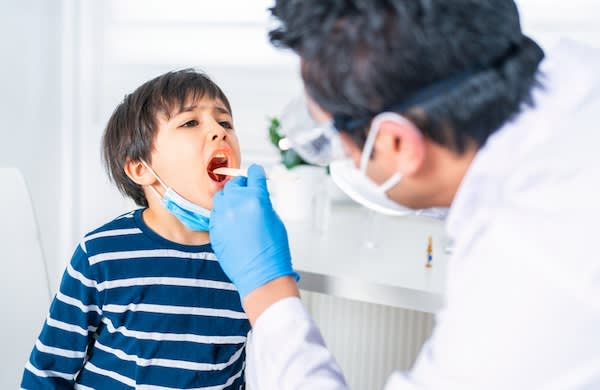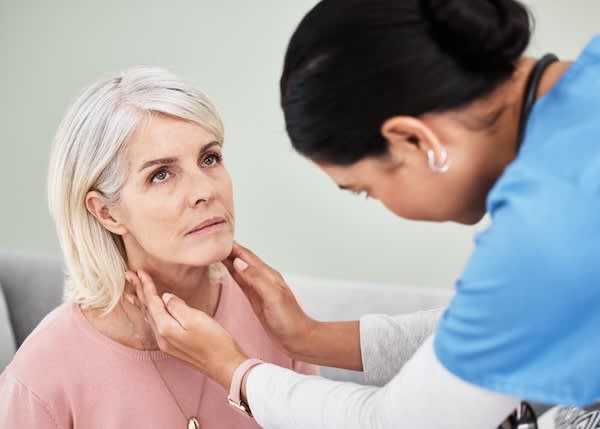RSV, Flu & COVID: What you need to know
[5 MIN READ]
In this article:
-
How can you tell the difference between respiratory syncytial virus (RSV), COVID-19 and the flu? We’ll give you some insight.
-
Children under the age of 2 are most at risk for RSV.
-
New COVID-19 boosters have been approved for everyone six months and up.
Last year, news organizations reported on a “tripledemic” — the combination of respiratory syncytial virus (RSV), COVID-19 and the flu, all hitting the general public at the same time. While it’s still the beginning of the flu season, the Providence pediatric team is addressing all three of these maladies — and what you and your family can do to stay healthy this fall and winter.
What is RSV?
- RSV stands for respiratory syncytial virus. It’s one of the many respiratory viruses that causes what we know as cold symptoms in adults and children.
- Symptoms can include runny nose, cough, sneezing and fever.
- RSV may also cause more significant respiratory symptoms, difficulty breathing and dehydration due to difficulty eating and/or drinking in younger children.
Who is at highest risk?
- Infants and young children under the age of 2, though we are seeing some older children this year requiring hospitalization for RSV.
- Infants and children with heart or lung disease or a history of asthma, allergies or eczema.
- Anyone with a very compromised immune system or chronic disease.
How do I treat RSV?
- Most RSV treatment is supportive care, which means helping your child feel better through their illness.
- At-home treatment includes gentle suctioning of the nose to make breathing and feeding easier, a cool mist humidifier, medications like acetaminophen and ibuprofen to treat fever, and making sure to keep hydrated — especially in babies and children. Children over the age of 1 year can have honey added to warm fluids to help soothe a sore throat. Over-the-counter common cold medications are typically not helpful for children under the age of 5 and can have dangerous side effects, so are best avoided.
- Prevention is critical! Handwashing, mask wearing, staying home from work, school or day care when sick and avoiding anyone who has respiratory symptoms are vital in preventing the spread of RSV, influenza and COVID-19.
What do I need to know about COVID-19 right now?
On September 11, 2023, the Food and Drug Administration (FDA) approved a new round of COVID-19 boosters. The arrival of the new vaccines comes at a crucial time, as the number of COVID-related cases continues to rise in certain areas across the country.
The reformulated vaccines are projected to provide better protection against the recent subvariants and will begin to be distributed by the end of the week. The number of doses for the new vaccine is dependent on age and prior immunizations, as noted in a recent article released by the FDA, but in general, everyone six months of age and up can receive the vaccine.
How do I know if my child or other family member has RSV, the seasonal flu or COVID?
- For older children, RSV cases look and feel like a typical cold, with similar symptoms such as a stuffy nose, cough, sneezing, congestion and, sometimes, a fever.
- Infants and toddlers are more likely to have RSV symptoms affecting their lungs, such as wheezing, fast breathing, difficulty with their sinuses or respiratory distress. This type of infection is called bronchiolitis and can sometimes require oxygen support or other medical care.
- Flu frequently causes fever, fatigue, body ache, coughing and congestion.
- Loss of taste or smell are more specifically symptoms of COVID-19.
- It’s not always possible to tell which virus is causing symptoms without a test; however, most people with cold symptoms do not need to be tested for RSV. There is no specific treatment, and no need to visit a pediatrician, urgent care or emergency department to get tested for RSV if you are having mild to moderate cold symptoms.
When should I contact my doctor or seek emergency care?
- If your child is having difficulty breathing, including fast or short breaths, grunting noises, unusual movements of the chest or ribs, or wheezing.
- If your child is unable to eat or drink normally.
- If your child is showing signs of being less responsive than usual or has a significant change in their level of activity.
- If your baby is younger than 2 months of age and has a fever of 100.4 F or higher.
- Call 911 if your child has grey or blue color of the mouth, lips or tongue, is having severe difficulty breathing, or you have other emergent concerns.
The best thing parents and caregivers can do to keep their children healthy and safe is to practice all the measures that were emphasized during the pandemic: Avoid contact with those who are sick, wash hands frequently, clean and disinfect surfaces and stay up to date on all routine vaccinations, including flu shots and COVID-19 boosters. It’s also helpful to limit infants’ exposure to frequent visitors and crowds — especially if they are at risk for severe illness and/or younger than 12 weeks of age.
“We continue to be vigilant observing what is happening with our younger patients born during COVID,” said Brian Simmerman, M.D., division chief of pediatrics for Providence Medical Group – Inland Northwest Washington. “They had diminished illness and exposures early in life because of COVID precautions, and we’re waiting to see what impact that has on their response to common viral illnesses like influenza.”
If you have questions about symptoms of RSV or need care for your child, contact your child’s primary care provider.
Contributing Caregiver
Brian Simmerman, M.D., division chief of pediatrics for Providence Medical Group – Inland Northwest Washington
Find a doctor
If you're looking for a provider, you can search for one who's right for you using our provider directory.
--
Download the Providence App
We’re with you, wherever you are. Make Providence’s app your personalized connection to your health. Schedule appointments, conduct virtual visits, message your doctor, view your health records and more. Learn more and download the app.
Related resources
How to choose between the ER, urgent care and your PCP
This information is not intended as a substitute for professional medical care. Always follow your health care professional’s instructions.





